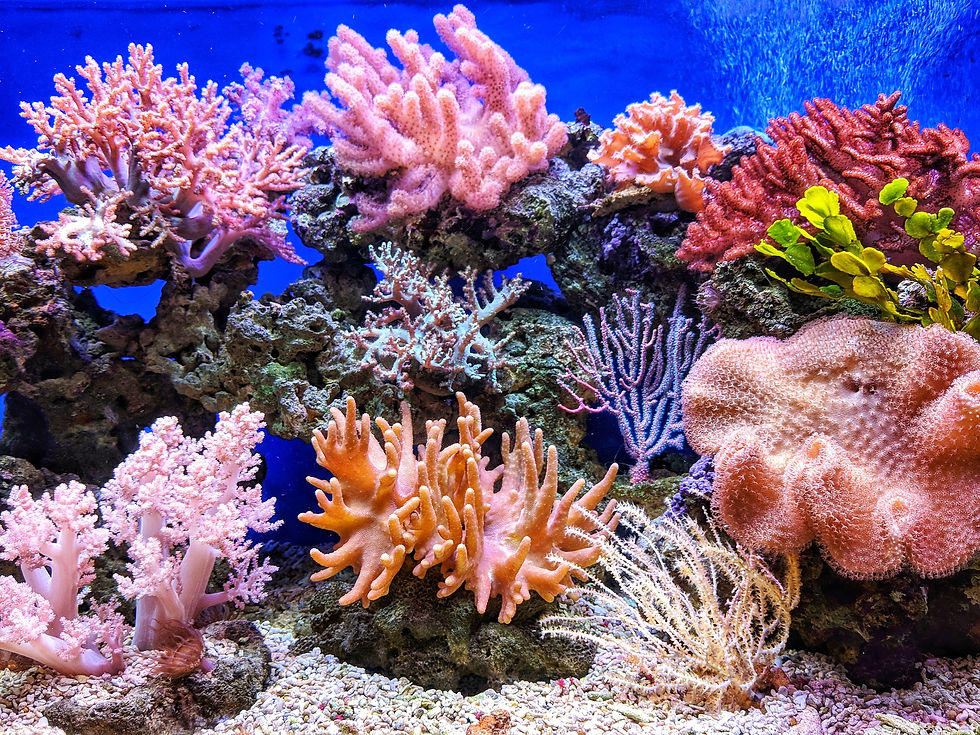You’re Probably Shedding Plastic?
- Heidi Aurelia Tulus

- Jun 9, 2021
- 4 min read
Updated: Aug 16, 2021
What if you were told that you are shedding little particles of plastics known as microfibre as you walk to work, school, or simply picking up groceries. And as you come home, your clothes shed those little particles of plastic, and when you wash your clothes, the particles then travel to the ocean, making their way to wildlife.
Would you change your fashion purchase habits?
These little particles of plastics or microfibre are also known as a part of a micro-plastic fibre. Right now, there might be 5.25 trillion macro and micro-plastics pieces floating around in the ocean. So, what materials shed microfibre?
Here is a list of plastic-based fabrics that you should try to avoid:
Polyester
Nylon
Acrylic
Polyvinylchloride/PVC/Vinyl
Polyuréthane/PU
Elastane/Spandex/Lycra
Sadly, these materials are used in 60% of clothes worldwide. Microfibre is around 5 millimetres long and the diameters are even measured in micrometres. They are tiny, but they make a large impact on micro-plastic pollution. Here’s why, when a garment is made by one of the materials listed above, throughout its life cycle it sheds microfibres.
Picture this, when you wash your garment, a single load of laundry releases hundreds of thousands of fibres from the clothes into the water supply.
Releasing microfibre when washing
Here’s an estimation of how many microfibres are released in a typical wash:
700,000 fibres would come off in a single load
1,900 fibres would come off a single synthetic garment
1,000,000 fibres would come off from washing a polyester fleece
So, for example, in a population of 100,000 people, they would produce approximately 1.02 kg of fibres each day. Then in a year, that’s 793 pounds of fibre for each individual.
When you insert a plastic contained garment into the washing machine, there is no filter inside the machine that catches these microfibres. The water then passes through sewage treatment plants and on most occasions there are no filters that are small enough to catch these microfibres.
On occasions where the filters catch these microfibres, the fibres will end up in the fertiliser or treated wastewater. They’re usually dumped into rivers in the sea, where it ends up again in the food chain, or wildlife. These waters also end up back in the ocean where it disturbs marine wildlife and even us in the life cycle.
These microfibres are a danger to wildlife, and research shows that 73% of fish caught at mid-ocean depths in the Northwest Atlantic has micro-plastics in their stomachs. Even those living things that are in the deepest parts of the ocean (Marian Tech) are eating microfibres.
It looks bad, and it looks inevitable but why do people still use plastics as prominent material in clothes?
Why do people still use plastic-based fabrics?
For starters, cost. Plastic-based fabrics are cheap, much cheaper than natural fibre. They are also stronger and durable. Plus, they also dry up in less time, which is super convenient. They’re versatile in fitting the material to different types of clothing. In athleisure or sportswear, it provides stretch and breathability, while in cold weather clothing it provides steadiness and warmth.
So how can we help with the current situation?
Consider buying more natural fibres
It is a legal law to put the material components on the clothing, so consider to take time and be more conscious when purchasing your items
Consider more sustainable materials
Buy fewer clothes overall
Avoid buying polyester fleece as this is known as the garment that sheds the most microfibre
If you already have some clothes containing synthetic plastic fibres, don’t throw them out! Here are some ways you can help minimising microfibre shedding:
Wash at low temperature
Put your wash inside a special bag that helps catch microfibres
Make sure your load is full inside the washing machine — it reduces friction between items
Reduce spin speeds
Air dry instead of tumble dry
Use front-loading rather than a top-loading washing machine
Keep the clothes for longer so it sheds fewer microfibre
Plastic-based fabrics-free brands
If you’re looking to shop more wisely, here are some brands you can check out that has the initiative to help reduce plastic in the industry.
Thought: a natural clothing company based in the UK. Their designs are known to be timeless with sustainable materials (like cotton and bamboo).
Sourcery the label: a sustainably sourced clothing company with a mission to make sure what touches your skin is cleaner, healthier, and has a lighter impact on the environment.
Organics Basics: selling undergarments, basic pieces, and more. This Denmark-based brand is sustainable, eco-friendly, ethical, low-waste, and low-impact.
Patagonia: environmental friendly activewear from California. A great brand to look at for investing in outerwear/cold weather clothing or for outdoor activities.
Outdoor voices: if you’re looking for sustainable activewear clothing to work out comfortably in, their athletic wear is suitable for any type of activity.
So, let’s take little steps to reverse the fashion industry’s negative impacts to our oceans together.



Comments